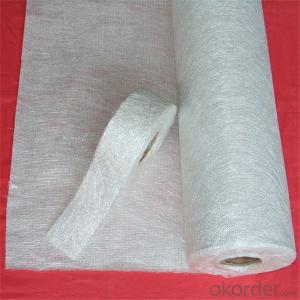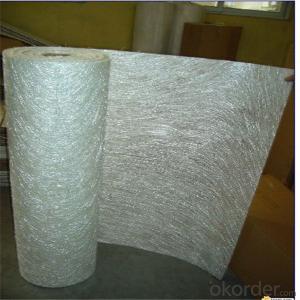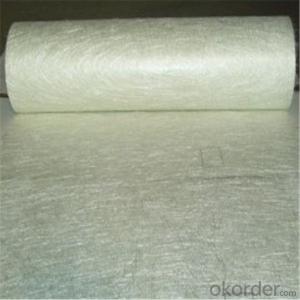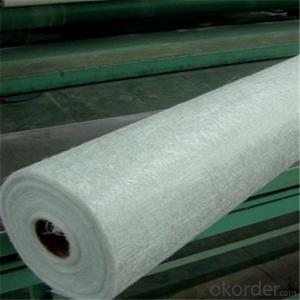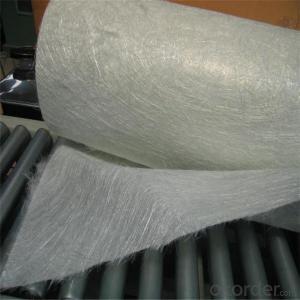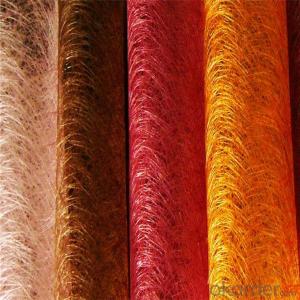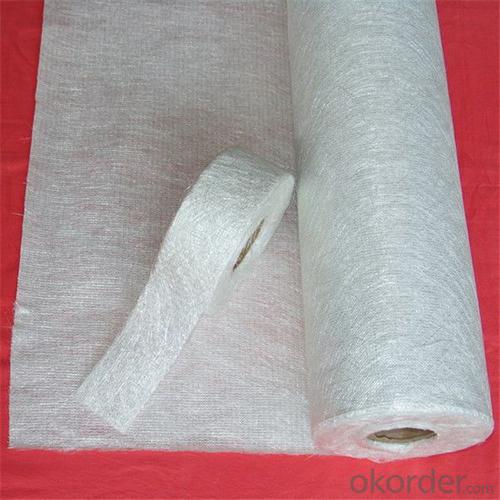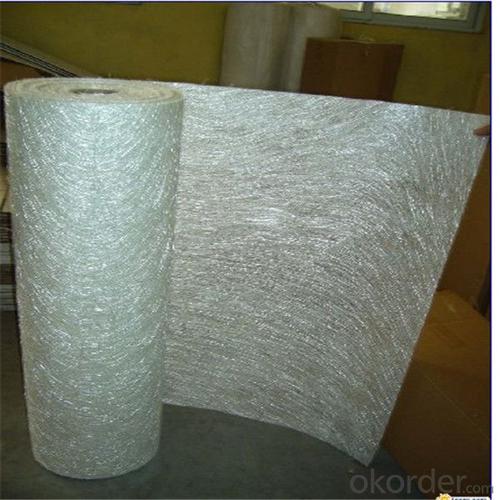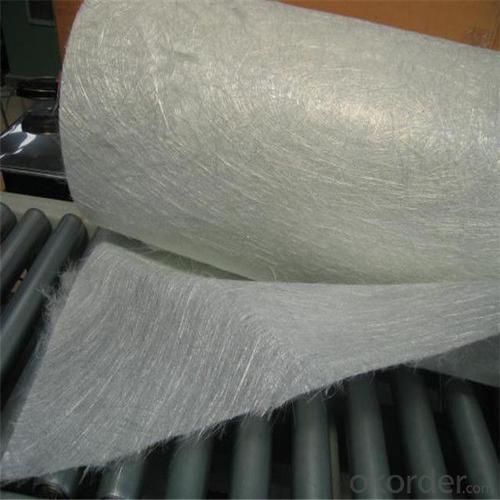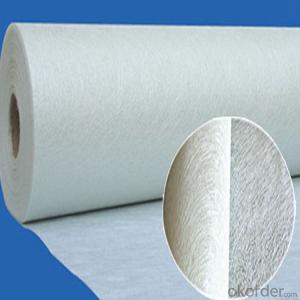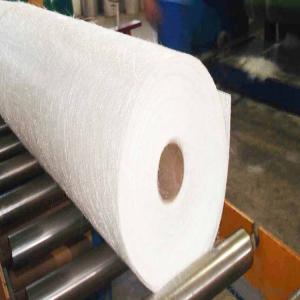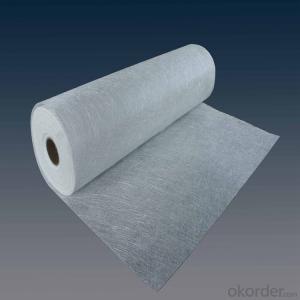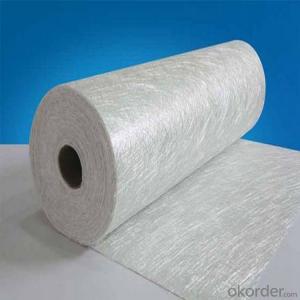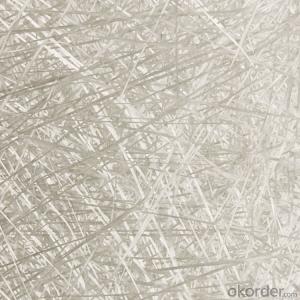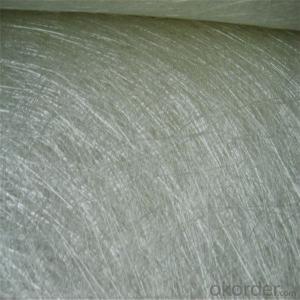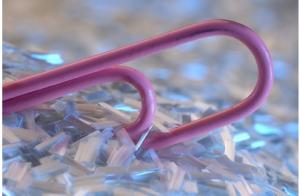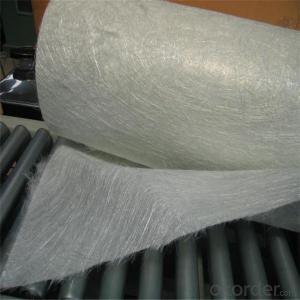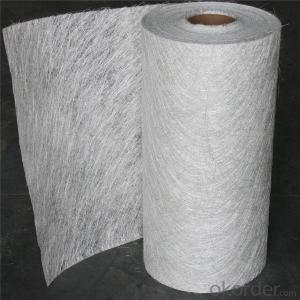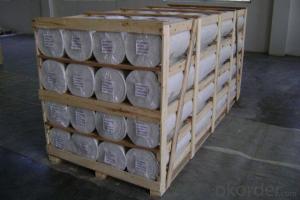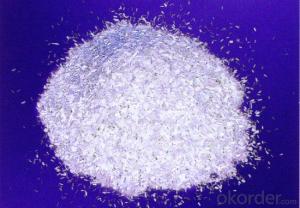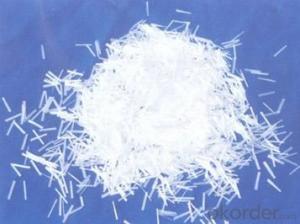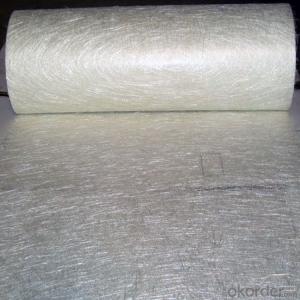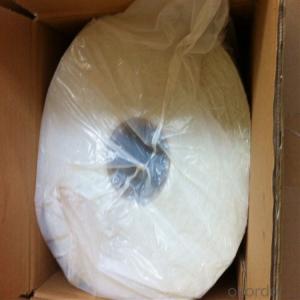Chop Strand Fiberglass for Epoxy Resin Easy Operation E-Glass Powder Chopped Stand Mats
- Loading Port:
- Tianjin
- Payment Terms:
- TT OR LC
- Min Order Qty:
- 100 m.t.
- Supply Capability:
- 20000 m.t./month
OKorder Service Pledge
OKorder Financial Service
You Might Also Like
Quick Details
| Technique: | Chopped Strand Fiberglass Mat (CSM) | Dimensions: | according to customer's request | Mat Type: | Stitch Bonding Chop Mat |
| Fiberglass Type: | E-Glass | Softness: | middle | Place of Origin: | Jiangxi, China (Mainland) |
| Brand Name: | cnbm | Model Number: | CSMEP100,CSMEP120,CSMEP200,etc | Product: | Cooling Tower Building Glass Fiber Fiberglass Chopped Strand Mat(csm) |
| Color: | White | Width: | 1040mm,1250mm,ect. | Area weight: | 225-900g/m2 |
| Application: | filament winding,panpel,ect |
Packaging & Delivery
| Packaging Details: | Each roll in one polybag then to an export carton. |
| Delivery Detail: | Within 18 days after confirm order |
Fiberglass Chopped strand mat
Powder Strand Mats Product Features:
1) Uniform density ensures consistent fiberglass content and mechanical properties of the composites products.
2)Uniform powder distribution ensures good mat integrity, little loose fibers and small roll diameter.
3) Excellent flexibility ensures good mold ability with no spring back at sharp angles.
4)Fast and consistent wet-out speed in resins and rapid air lease reduce resin consumption and production cost and enhances productivity and mechanical properties of the end products.
5)The composite products have high dry and wet tensile strength and good transparency.
Picture
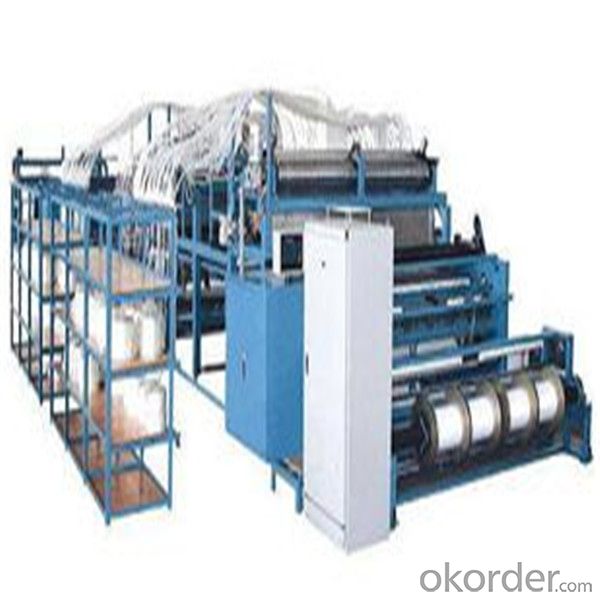
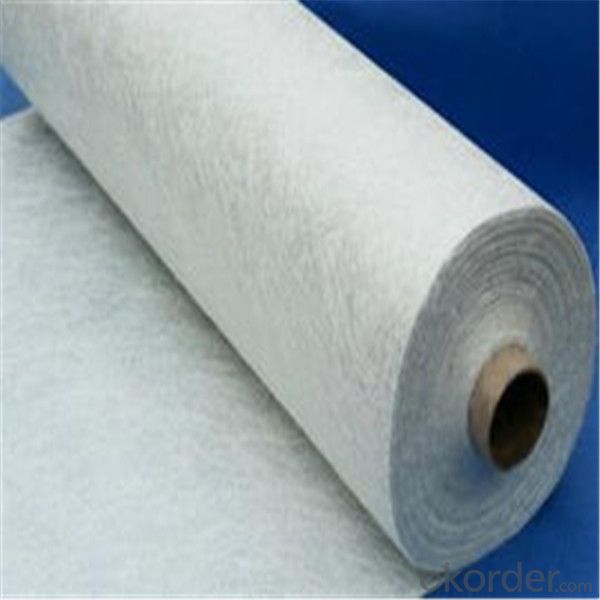
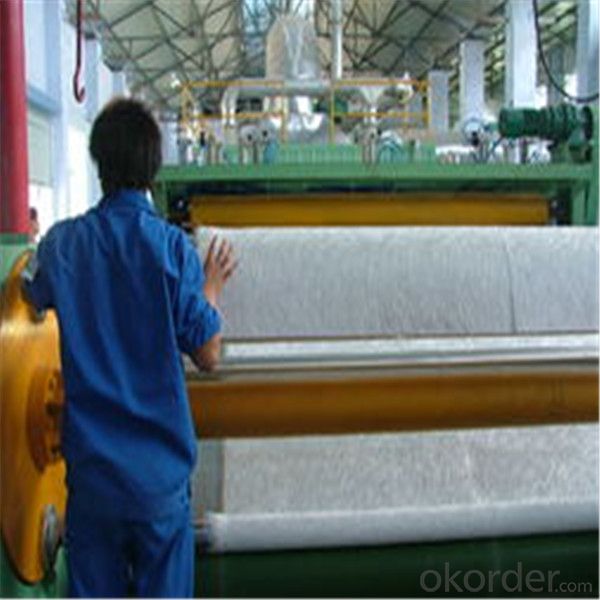
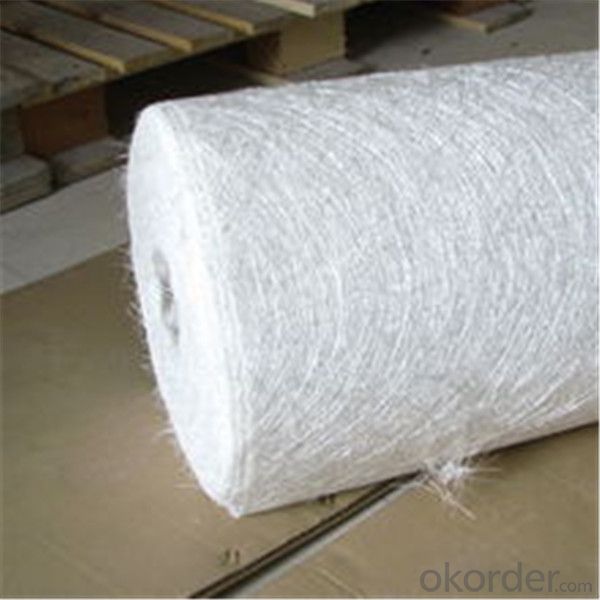
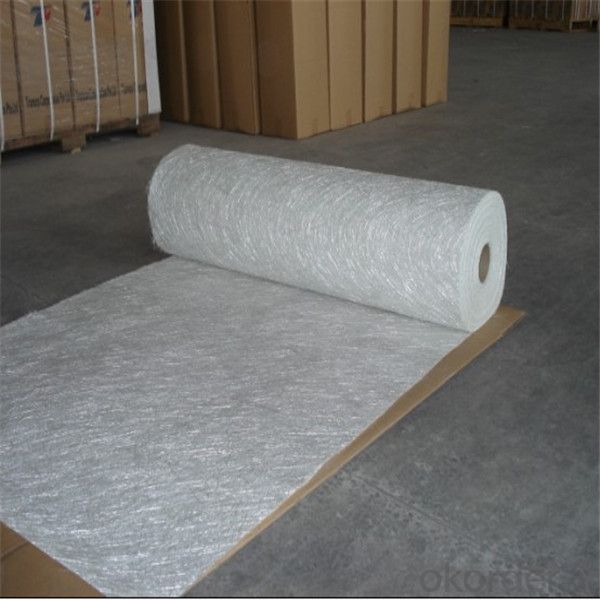
- Q: Brieaf introduction of carbon fiber?
- Along the fiber axis, it present very high strength; therefore the specific strength of CFRP material intensity and density can be achieved above 2000 MPa; high performance carbon fiber which made from polyacrylonitrile fiber precursors have tensile modulus about 200 to 700GPa. Some studies have pointed out that young's modulus (refers to the physical quantity that is characterized by the tensile or compressive strength of the material within the elastic limit) is 2 times more than that of the glass fiber. High purity and high temperature carbonization were used to prepare high performance PAN based carbon fiber, which gave the fiber chemical activity, viscose based carbon fiber. Carbon fiber's manufacturing progress includs fiber spinning. Comparing with aluminum and other metal materials, it is 7 to 9 times of strength of steel. In the early stage of aerospace grade carbon fiber, 3K is the main category, then the fiber is further produced by crosslinking, with its elongation rate greater than 2%. The equipment is complex, and it is destroyed. As it contains a large number of variables, like oxidation and oxygen, but the first two kinds of carbon fiber is mainly produced. The graphite is generally in the 2500 to 3000℃.
- Q: Can fiberglass chopped strand be used in electrical insulators?
- Yes, fiberglass chopped strand can be used in electrical insulators. Fiberglass is an excellent insulating material due to its high resistance to electricity and heat. Chopped strand refers to short strands of fiberglass that can be mixed with a resin and molded into various shapes, making it suitable for insulators. The chopped strands provide added strength and reinforcement to the insulator, while still maintaining its electrical insulation properties. This makes fiberglass chopped strand a popular choice for electrical insulators, as it can effectively withstand high voltage and provide insulation in various electrical applications.
- Q: Is fiberglass chopped strand suitable for sports equipment manufacturing?
- Yes, fiberglass chopped strand is suitable for sports equipment manufacturing. Fiberglass is a lightweight, durable, and strong material that is commonly used in the production of various sports equipment such as boats, kayaks, surfboards, hockey sticks, and helmets. The chopped strand form of fiberglass consists of small glass fibers that are randomly oriented and can be easily mixed with resin to create a composite material. This allows for flexibility and customization in the manufacturing process, as the chopped strand can be easily molded and shaped to meet the specific requirements and design of different sports equipment. Additionally, fiberglass has excellent tensile strength, impact resistance, and dimensional stability, making it an ideal choice for sports equipment that needs to withstand rigorous use and potential impacts.
- Q: What are the typical manufacturing processes for fiberglass chopped strand composites?
- The manufacturing of fiberglass chopped strand composites involves a series of essential steps. To begin with, the raw materials, which consist of chopped fiberglass strands and a resin matrix, are readied. The chopped fiberglass strands are typically made by cutting continuous glass fibers into shorter lengths, usually ranging from 0.5 to 3 inches. Following this, the resin matrix, typically a thermosetting material like polyester, vinyl ester, or epoxy, is mixed with various additives and catalysts to improve its mechanical properties and curing characteristics. The ratio of resin to chopped fiberglass strands is determined based on the desired strength and performance of the final composite. After the preparation of the raw materials, they are combined through a process known as impregnation. This involves thoroughly coating the chopped fiberglass strands with the resin matrix to ensure saturation. Various techniques, such as hand lay-up, spray-up, or filament winding, can be employed to achieve this. Once impregnation is complete, the composite material is shaped according to the desired form. This can be accomplished using techniques like compression molding, injection molding, or pultrusion. Compression molding requires placing the impregnated material into a mold and applying heat and pressure to shape and cure the resin. Injection molding follows a similar process but entails injecting the resin into a closed mold under high pressure. Pultrusion, on the other hand, continuously pulls the impregnated material through a heated die to shape it into a continuous profile. After shaping, the composite is cured to ensure the hardening of the resin matrix and bonding of the chopped fiberglass strands. Curing can be achieved through heat, chemical reactions, or a combination of both, depending on the specific resin system used. The temperature and duration of curing are precisely controlled to attain the desired mechanical properties and dimensional stability. Lastly, the cured composite undergoes trimming, finishing, and quality inspection. Trimming involves the removal of any excess material or flash that may have formed during shaping and curing. Additional post-processing steps, such as sanding, painting, or coating, may be applied to further enhance the appearance and performance of the finished composite. In summary, the manufacturing processes for fiberglass chopped strand composites involve the preparation of raw materials, impregnation of the chopped fiberglass strands, shaping of the composite, curing of the resin, and finishing of the final product. These processes can be customized based on specific application requirements and desired composite properties.
- Q: Can fiberglass chopped strand be used in the production of agricultural equipment?
- Yes, fiberglass chopped strand can indeed be used in the production of agricultural equipment. It is commonly used to reinforce and strengthen various components, such as panels, hoods, and body parts of agricultural machinery. The fiberglass chopped strand offers excellent mechanical properties, high strength-to-weight ratio, and resistance to corrosion, making it a suitable material for enhancing the durability and performance of agricultural equipment.
- Q: What are the typical post-processing treatments for fiberglass chopped strand composites?
- Typical post-processing treatments for fiberglass chopped strand composites include trimming excess material, sanding or grinding to achieve desired surface finish, applying gel coat or paint for aesthetics and protection, and sometimes adding additional layers of reinforcement or coating for improved strength or specific properties.
- Q: How does the fiber diameter affect the performance of fiberglass chopped strand?
- The performance of fiberglass chopped strand is heavily influenced by the diameter of the fibers. The mechanical properties, including strength, stiffness, and impact resistance, are directly impacted by the diameter. Higher strength and stiffness are typically associated with smaller fiber diameters. This is due to the fact that smaller diameters allow for a greater number of fibers to be included in a given volume. As a result, load transfer becomes more efficient, leading to increased overall strength. Additionally, smaller diameter fibers tend to have fewer defects, such as voids or impurities, which can weaken the material. Furthermore, a smaller diameter also improves the bonding between the fibers and the matrix material, resulting in an enhanced composite performance. The larger surface area of the smaller fibers allows for better adhesion with the matrix, leading to improved load transfer and mechanical properties. It is important to note, however, that there is an optimal range of fiber diameter for specific applications. If the diameter becomes too small, it can be challenging to handle and process, resulting in difficulties achieving uniform distribution and effective reinforcement within the matrix. Conversely, if the diameter becomes too large, it may result in less efficient use of the material and reduced mechanical properties. In conclusion, the fiber diameter of fiberglass chopped strand is a critical factor in determining its performance. Smaller diameters generally improve strength, stiffness, and bonding while reducing defects. However, it is important to consider the optimal range for each application to ensure ease of processing and optimal reinforcement.
- Q: How does the orientation of fiberglass chopped strand affect its performance?
- The orientation of fiberglass chopped strand has a significant impact on its performance. In the manufacturing process, fiberglass strands are cut into small pieces, known as chopped strand, and these pieces can be oriented in different ways to achieve specific performance characteristics. The orientation of chopped strand affects the strength, stiffness, and overall mechanical properties of fiberglass composites. When the strands are randomly oriented, the resulting composite exhibits isotropic properties, meaning it has similar strength and stiffness in all directions. This random orientation can provide good overall strength but may lead to reduced performance in specific loading directions. On the other hand, when the strands are aligned in a specific direction, such as in unidirectional or aligned strand mats, the resulting composite exhibits anisotropic properties. This means that the composite will have different strength and stiffness properties in different directions. Unidirectional composites, for example, have high strength and stiffness along the fiber alignment direction but are weaker in other directions. The orientation of chopped strand also affects the interfacial bonding between the fibers and the resin matrix. In randomly oriented chopped strand composites, the fibers are more likely to be dispersed evenly throughout the matrix, improving the overall bonding and load transfer between the fibers and the matrix. In contrast, unidirectional composites may have areas with poor bonding if the fibers are not fully impregnated with the resin. Overall, the orientation of fiberglass chopped strand plays a crucial role in determining the performance of fiberglass composites. Manufacturers can tailor the orientation to meet specific design requirements, balancing the desired mechanical properties and cost considerations.
- Q: How does the transparency of the chopped strand affect its performance?
- The transparency of a chopped strand can have a significant impact on its performance. Chopped strands are commonly used as reinforcements in composite materials, such as fiberglass, to enhance their strength and stiffness. The transparency of the chopped strand refers to its ability to transmit light, or the degree to which it allows light to pass through. In general, a more transparent chopped strand tends to have better performance characteristics. This is because transparency is closely related to the quality and purity of the strand. A transparent chopped strand indicates that it has a high degree of clarity and is free from impurities or defects. This leads to a more uniform distribution and alignment of the fibers within the composite material, resulting in improved mechanical properties. Transparency also affects the bond between the chopped strand and the resin matrix in composite materials. A more transparent strand allows for better wetting and impregnation of the fibers by the resin, leading to a stronger bond and improved load transfer between the two components. This enhances the overall strength and durability of the composite material. Furthermore, the transparency of the chopped strand can also influence other properties, such as the appearance and color of the composite. In applications where aesthetics are important, a more transparent strand can result in a clearer and more vibrant finished product. However, it is important to note that the specific requirements for transparency may vary depending on the intended application. In some cases, a certain level of opacity or color may be desired for specific design or functional reasons. Therefore, it is crucial to consider the specific performance requirements and desired characteristics when selecting the appropriate chopped strand for a particular application.
- Q: Is fiberglass chopped strand compatible with different curing methods?
- Yes, fiberglass chopped strand is compatible with different curing methods. It can be cured using various methods such as heat curing, chemical curing, and ultraviolet (UV) light curing, depending on the specific application and requirements.
Send your message to us
Chop Strand Fiberglass for Epoxy Resin Easy Operation E-Glass Powder Chopped Stand Mats
- Loading Port:
- Tianjin
- Payment Terms:
- TT OR LC
- Min Order Qty:
- 100 m.t.
- Supply Capability:
- 20000 m.t./month
OKorder Service Pledge
OKorder Financial Service
Similar products
Hot products
Hot Searches
Related keywords
